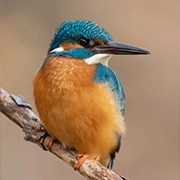Breathing Below the Surface
Hey Lykkers! Dive into this watery world where breathing doesn’t involve lungs or gasps for air. In the vast ecosystems of rivers, oceans, and lakes, animals have evolved fascinating ways to extract oxygen from water. While we rely on lungs, aquatic creatures have adapted with gills, skin, and even unique air-breathing methods to survive in their submerged habitats.
In this guide, you’ll swim alongside fish, amphibians, mollusks, and more as we explore the remarkable diversity of respiration under the surface. Whether it’s a tuna racing through currents or a frog relaxing in a pond, their breathing strategies are just as clever as they are essential.
Part 1: Gills and Their Many Designs
Let’s start with the stars of underwater breathing—gills. While fish are the first to come to mind, they’re not the only ones using this method. You'll soon discover how nature's design varies across the aquatic world.
How Gills Work in Fish
Picture a goldfish blowing bubbles or a shark slicing through the sea. Their gills are doing all the hard work. Water enters through the mouth, flows over the gills, and exits through the sides. Oxygen diffuses from the water into the blood vessels inside the gill filaments—delicate structures that offer a large surface area.
If you're observing closely, you'll notice gill covers moving rhythmically. That motion pumps water through the system. Some fish, like tuna, never stop swimming because they rely on a constant water flow to keep oxygen levels high. Others, like groupers, can sit still and actively pump water. You can almost think of it like snorkeling—but with built-in gear!
More Than Just Fish
You might be surprised to learn that creatures like octopuses, clams, and even some amphibians use gill-like structures too. Octopuses, for instance, draw water into their mantles and push it past their gills to absorb oxygen.
Meanwhile, young amphibians like tadpoles begin life with external gills that sway in the water like feathery fans. As they mature, many grow lungs and hop onto land. The variety is incredible—and it shows how flexible evolution can be in solving the same problem in different ways.
Part 2: Beyond Gills—Unusual Breathing Techniques
While gills are common, they’re not the only tool in the underwater breathing toolkit. Let’s explore the oddballs—those aquatic animals that breathe in ways that might surprise you.
Skin Breathers and Air Gulpers
Some animals don’t rely on gills at all. Take the axolotl, for example. This charming salamander uses both gills and its skin to breathe. Its skin is thin and packed with blood vessels, allowing oxygen to pass through directly from the water.
Then there are creatures like the lungfish, which gulp air when water oxygen levels drop. These fish have developed lung-like structures and can even survive droughts by burrowing into mud and slowing their metabolism. If you’ve ever seen a turtle stick its nose above water, it’s doing something similar—switching to air when needed.
Bubble Homes and Snorkel Tricks
Let’s not forget the inventors. Some aquatic insects create air bubbles and trap them under their bodies like mini scuba tanks. Others, like the water scorpion, use a long snorkel-like tube to draw air from above the surface while staying hidden below.
You’ll find these breathing tricks especially useful in shallow ponds and streams where oxygen levels change rapidly. It’s all about staying adaptable—whether that means carrying your own air or developing stretchy lungs that switch between water and air with ease.
From sleek gills to clever air traps, the ways aquatic animals breathe are as diverse as the oceans themselves. These fascinating adaptations aren’t just about survival—they’re about thriving in environments that challenge every breath.
Lykkers, next time you pass by a pond or gaze at an aquarium, take a moment to appreciate the hidden work happening with each gentle movement. Whether it’s a fish fanning its gills or a salamander soaking in oxygen through its skin, underwater respiration is a quiet wonder that keeps the aquatic world alive and flowing.

 · Animal team
· Animal team